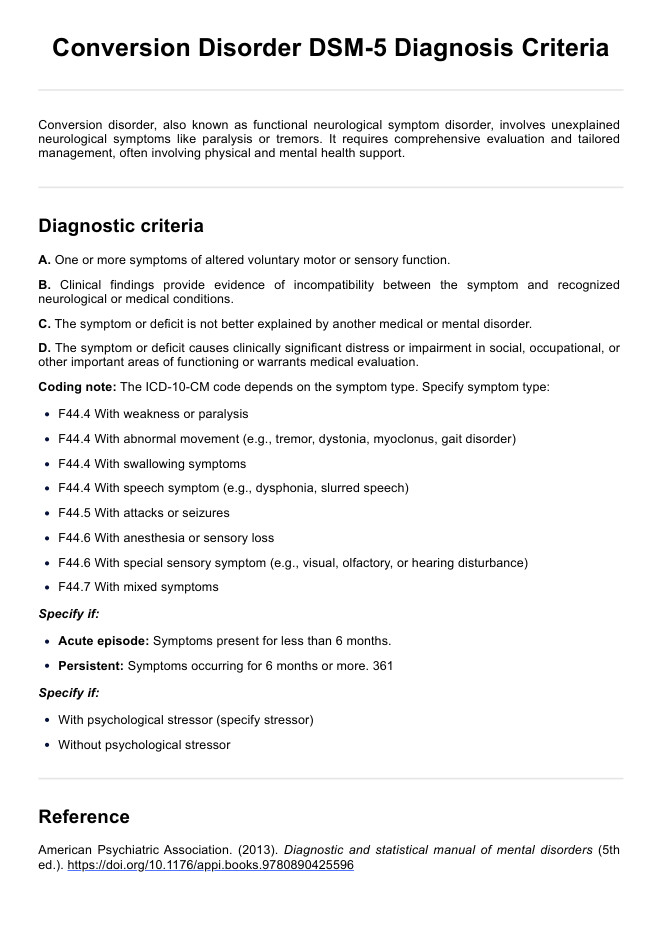The exact cause of conversion disorder is not well understood. However, it is often associated with stress, trauma, or psychological factors. It may occur in response to significant emotional or physical stress, but these factors are not always evident at the time of diagnosis.

Conversion Disorder DSM-5 Criteria
Explore effective strategies for managing conversion disorder, a condition with unexplained neurological symptoms, through expert care and tailored therapies.
Conversion Disorder DSM-5 Criteria Template
Commonly asked questions
Treatment typically involves a multidisciplinary approach. Physical therapy and occupational therapy help address motor symptoms and improve function. Psychotherapy, particularly cognitive-behavioral therapy (CBT), can assist in managing psychological factors and related mental health conditions. Education and support for patients and their families are also crucial.
While there is no specific cure, many individuals experience significant improvement with appropriate treatment. Early intervention and a comprehensive treatment plan can help manage symptoms and enhance quality of life.
EHR and practice management software
Get started for free
*No credit card required
Free
$0/usd
Unlimited clients
Telehealth
1GB of storage
Client portal text
Automated billing and online payments











